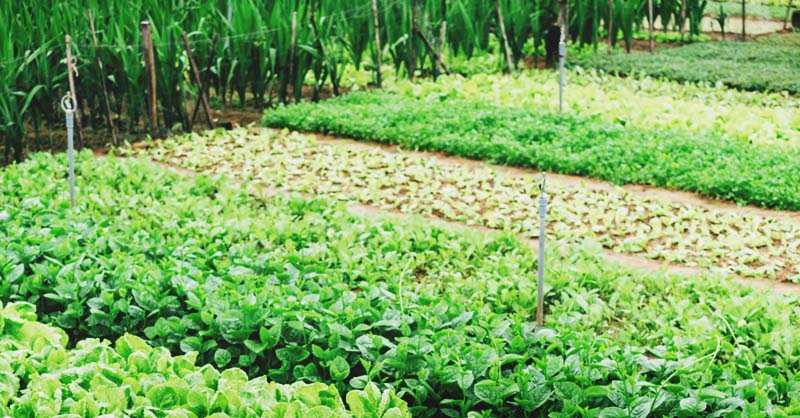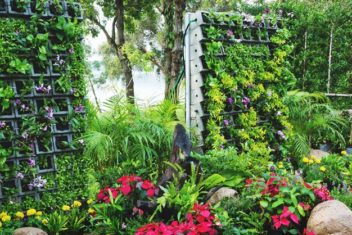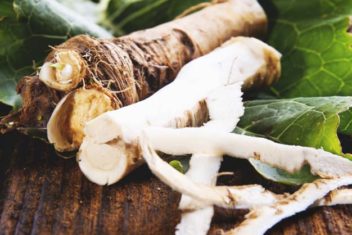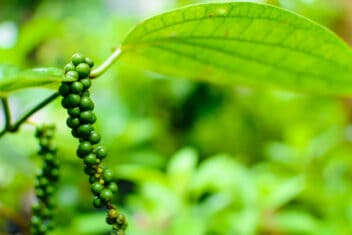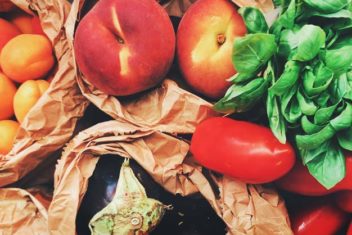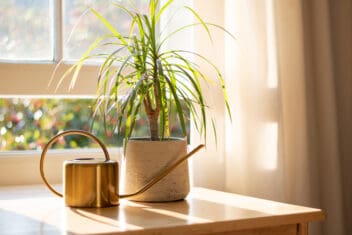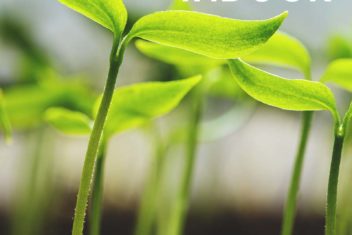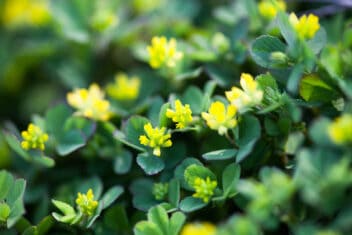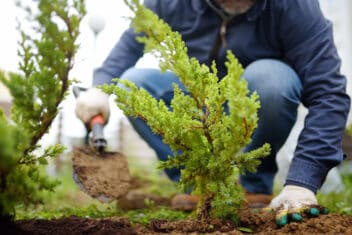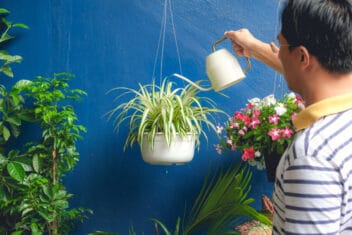After our 19th consecutive day of over 85°F weather with only 1/10th an inch of rain in more than a month, it’s starting to feel like the Sahara on our homestead. Oh, did I mention it’s still spring?
We technically live in “The South” as in the Southern United States, which is known for hot weather. However, we’re in the foothills of the mountains where temperatures used to be entirely more reasonable.
Still, like many people, we are experiencing far more consecutive hot days than is typical for our climate. The heat also starts earlier in spring and extends longer into fall, which effectively shortens our window for safely growing cool season crops.
Plus, higher temperatures makes starting some of our warm season crops more difficult. In fact, there are many other hidden complications from premature heat streaks too.
As homesteaders, we are used to thinking about season extension to start plants early in spring or grow them later into fall and winter. Now though, for many of us, it’s time to start thinking about season extension in terms of finding ways to extend our cool season too!
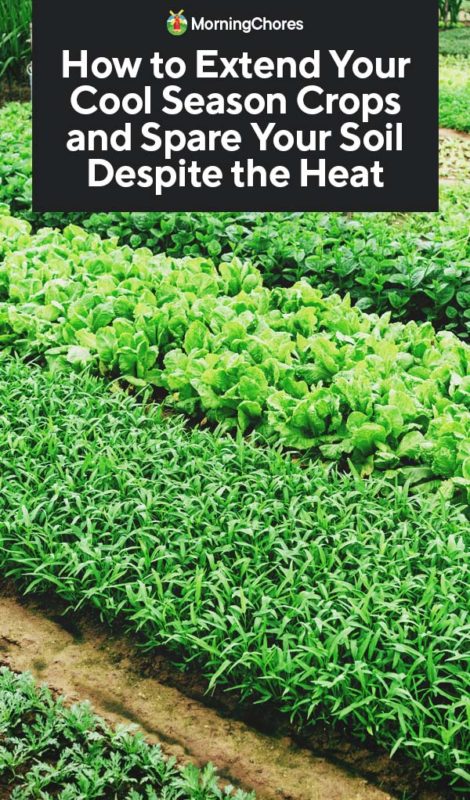
Heat Can Be a Big Problem For Gardens
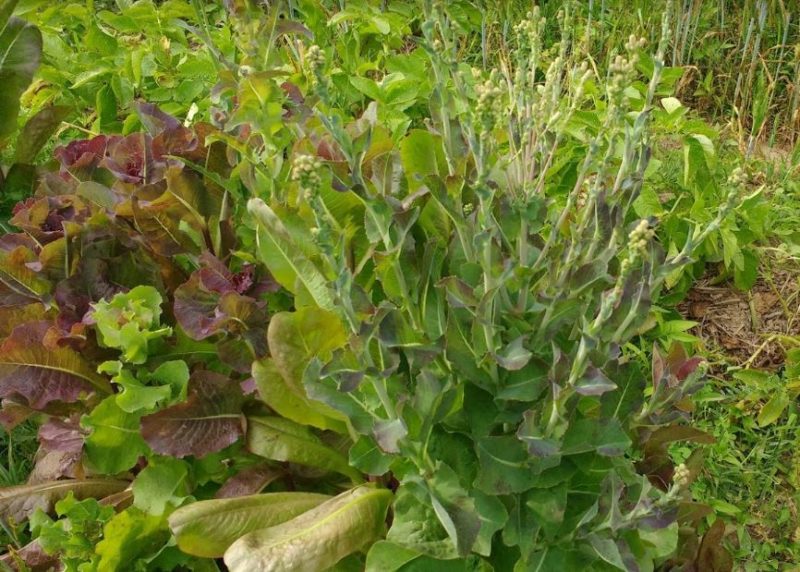
The kind of early season heat wave I described above is a big problem for many gardeners. For starters, our cool season plants are more likely to bolt (or start to flower) in excessive or unseasonable heat. But, that is only the beginning of the problems excessive heat can cause in the garden.
Even when you can effectively stave off bolts, your plants face a host of other risks related to heat stress that isn’t as easy to solve. For example, photosynthesis and transpiration, two processes essential to plant development, can be severely limited as a result of heat stress.
Photosynthesis Failure
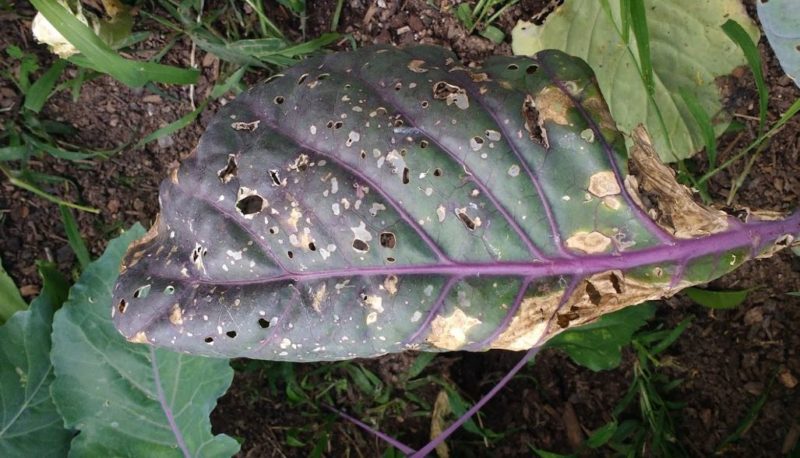
Photosynthesis is the process by which plants use the sun’s energy, water, and carbon dioxide to make their food. These sugars, along with nutrients from the soil, are absolutely necessary for plant growth.
Short Term Issues
In short-term heat, plants may temporarily shut down some of their sugar production without permanent damage. It’s like us taking a nap under a tree on a hot day. No work gets done, but no real harm is done by taking a short break.
From a gardener’s perspective, our plants seem to stop growing on really hot days. A tomato or squash will simply stay the same size for a day or two. No new flowers will form. Foliage will stay healthy, but not get any bigger.
Reduced photosynthesis means later harvest times. But, otherwise, it’s not a huge issue for gardeners.
Long Term Issues
In the case of extended heat though, plants can begin to suffer irreversible damage to their abilities to make sugars using photosynthesis. Plants don’t just take a nap. Some of their critical systems start to fail from the pressure of too many excessively hot days.
Different plants have different heat failure thresholds. Cool season plants, of course, have a lower tolerance for heat than warm-season plants. Yet, even among warm-season plants, there are huge variances.
For example, immature warm season plants often have a much lower heat tolerance than well-established plants. If heat strikes when plants are in their critical development phases, they can form weak root systems, develop deformities, or fail to grow without proper functioning photosynthesis systems.
Transpiration
Just like in humans, when our major systems start to fail, secondary systems usually follow quickly. For example, lung problems can often lead to heart problems because the body doesn’t get enough oxygen for the heart to do it’s thing properly.
When secondary systems start to fail, they can sometimes cause even more harm, more quickly, than the primary complications. The same is true for plants.
Plants don’t have lungs. So they don’t exactly breathe. They do something that’s kind of like breathing and sweating at the same time. That process is called transpiration.
Essentially, plants take up water from the soil. They use some of that water to stay well hydrated and cool themselves internally. But they also release some of that water back out into the air through their leaves. As the water evaporates, it creates a cooling effect for the plant.
As you would expect, the amount of transpiration increases in hot weather and decreases in cool weather. Unfortunately, transpiration is one of those secondary system failures that happen early on when photosynthesis declines.
That’s because transpiration is a high energy process. It’s like running your AC on a hot day. So, when transpiration increases, plants require more energy in the form of photosynthesis and from the soil to survive than under normal transpiration conditions.
Since the energy to operate the system isn’t available, heat-stressed plants become even less capable of cooling themselves.
Soil Life Risks
Additionally, when plants transpire a lot, they remove water from the soil. As the soil dries out, it also heats up.
Most of the microbial life in the soil shifts into high gear in warm temperatures. As a result, all that organic matter you added to your garden at the start of the season gets broken down much faster in warmer weather.
Faster decomposition rates and faster plant uptake rates collide to bankrupt your soil. When your organic matter is gone, your soil fertility account is empty. Unfortunately, just like most banks, your soil will actually let you go negative.
Not only do your plants start to die and your organic matter gets burned up, but your soil structure also degrades as water stores are drained. That loam-like texture you’ve been working hard to attain using compost can be lost quickly when heat-stressed plants occupy your garden beds.
Hard Lessons in How to Take the Heat
Yikes! I know I just painted a dire picture. I wish I were exaggerating. But, I had a setback that sent me down this research path several years ago. So, I know first-hand how devastating extended heat can be to plants and soil.
Simple Summer Solutions
Luckily, it’s not hopeless. In fact, in continuously hot weather, all you need to do is water regularly and deeply. Then, you need to keep heat-loving plants growing in your garden as much as possible.
Growing a fair amount of C4 carbon fixation plants such as maize, some amaranths, millet, and sorghum will help. Plus using those taller C4 plants as part day shade for other warm season plants can do wonders for your summer soil condition.
The real challenge, though, is that in-between period when you’ve still got cool season crops in the ground and hot season weather sets in. But, I happen to know a few tips to help you deal with that situation too!
Cool Season Crops Extension in Hot Weather
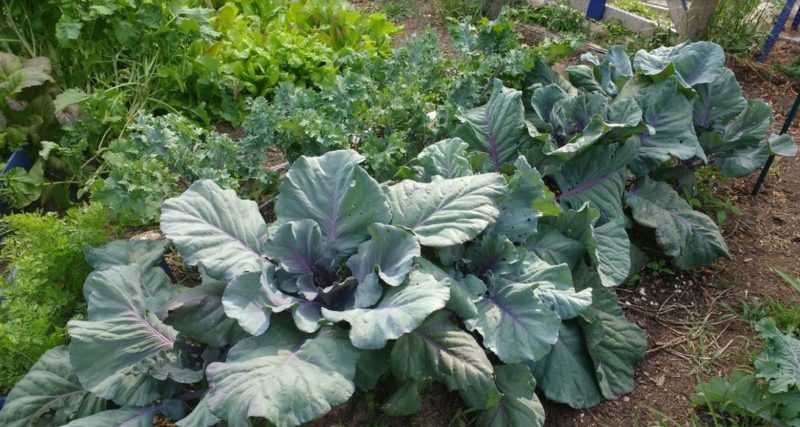
Extending your cool season in hot weather is slightly different than creating warmer conditions in cool weather. However, there are some similarities such as using plant selection, mulch, and protective seasonal coverings for cooling the garden too.
Tip 1: Grow Heat-tolerant Cool Season Crops
If you live in an area that is prone to hot days in early spring, you need to choose cool season plant varieties that have greater heat tolerance. Seeds labeled as slow-bolting or heat-tolerant have generally shown greater resistance to heat swings. Varieties that are labeled best for long, cool growing seasons should be avoided altogether or only planted in fall.
Fast maturing cabbages such as Early Jersey Wakefield or Golden or Red Acre cabbage are more heat tolerant than long growing ballheads. Broccoli is more heat tolerant than Brussels sprouts. Purple cauliflower or smaller heading varieties work better than giant, white cauliflower heads.
Cool season crops grown for their flowering heads such as broccoli raab or Chinese kale keep on growing in hot weather. Kale and mustard, in general, do better in the heat than many other cool season crops.
Tip 2: Grow Baby Size Vegetables
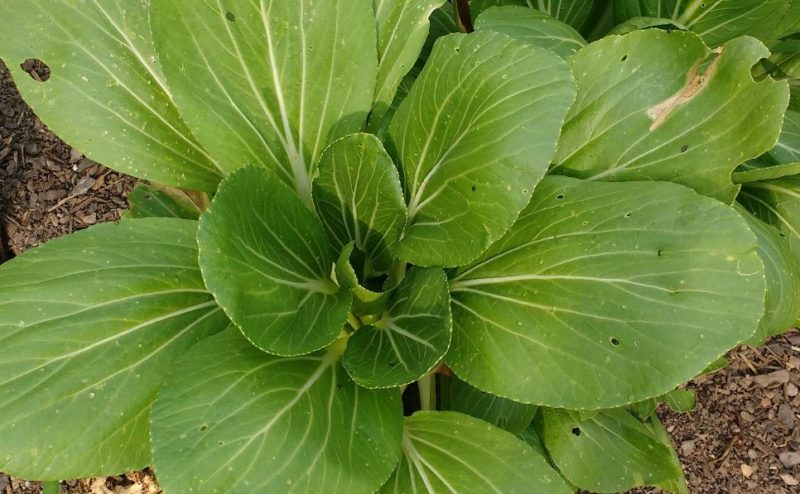
Things like Chinese cabbage are guaranteed to bolt when the thermometer hits 85°F for more than a few days. So, plant lots more of them and harvest at half size. Then get your warm season crops in your turned beds earlier.
Baby turnips, half-sized daikons, and Pok/Bokchoy are also great harvested young. Harvesting baby peas is a bit more work than full-size peas. But, it’s also an option for early summers.
Tip 3: Higher Planting Density
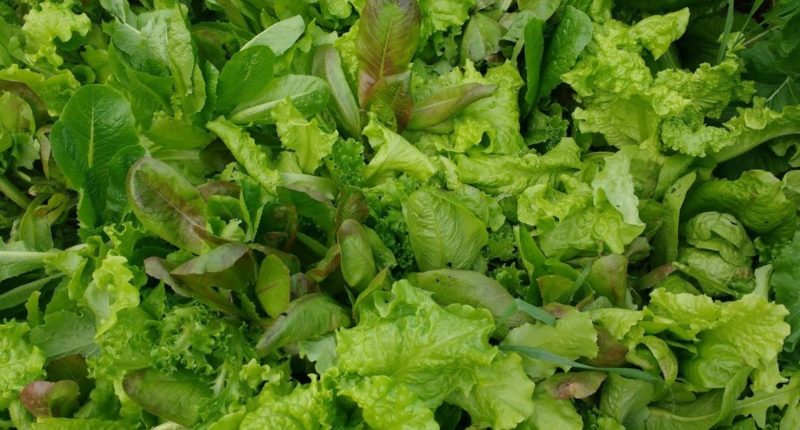
Plants grown closely together shade soil. They also share the evaporative cooling benefits from transpiration.
Dense planting requires high soil fertility, regular harvesting, and rapid response to pest problems. So, it’s not for the lazy gardener. But, if you master maintaining soil fertility, you can plant more in a small space and have better heat resistance and soil protection at once.
Tip 4: Mulch Appropriately
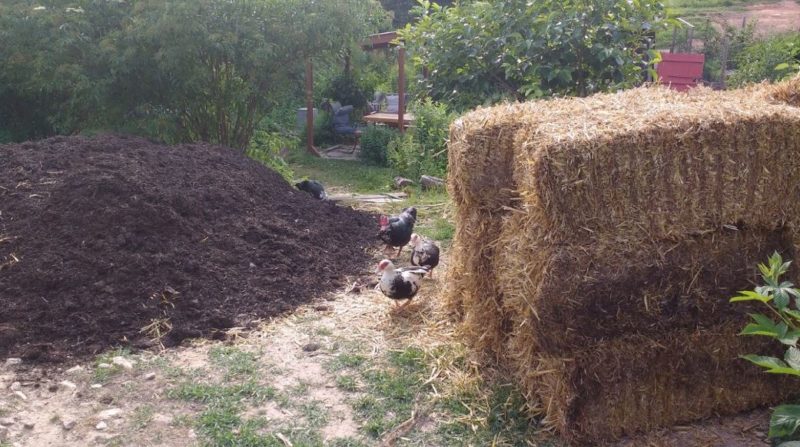
Mulch of all kinds helps reduce soil temperature by keeping more moisture in the ground. However, in hot weather, using light colored mulch will reduce the amount of radiant heat absorbed by your soil.
In the same way that wearing white keeps you cooler in sun than black, covering your dark colored soil with light colored mulch like straw can help. You can even use your white, floating row cover material directly in your beds.
Rather than using it to cover plants, lay it on your beds wherever you have exposed soil such as between rows or in open spaces where plants are just starting to germinate.
Tip 5: Provide Mid-day Shade for your Cool Season Crops
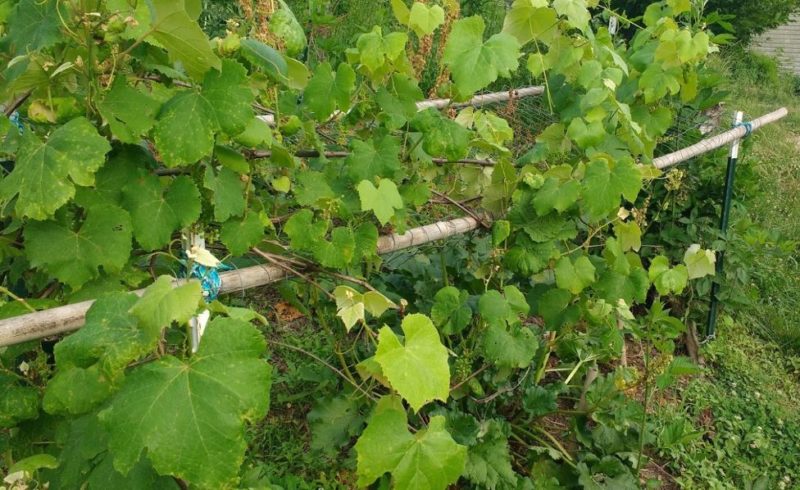
Most vegetables need a minimum of 6-8 hours of sun for good production. But, that sun does not need to come in the hottest hours of the day.
Narrow, row shade covers located directly over plants can provide shade when the sun is directly overhead. Because the sun moves in an arc, plants can still get plenty of sun at other times of the day. You can use shade cloth or weave natural materials for this purpose.
Tip 6: Provide Afternoon Shade for Your Cool Season Crops
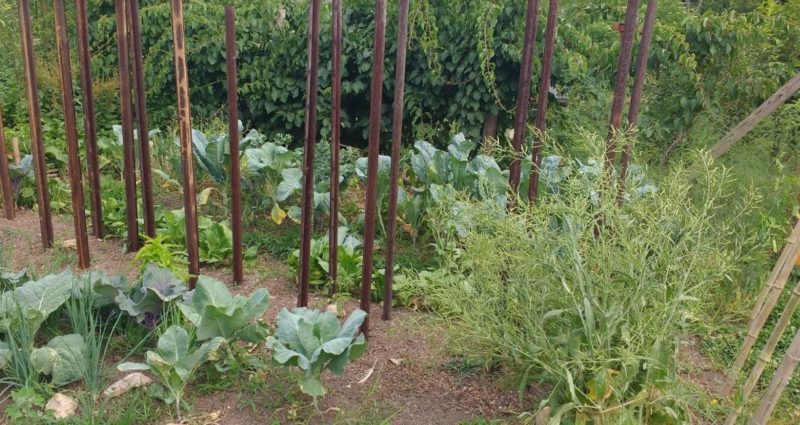
Plants benefit most from good morning sun. So, if it’s not reasonable to provide mid-day direct overhead shade, then late afternoon shade can also help.
My most successful garden gets completely shaded out by our woods at about 4:30 pm each day. That cuts out about 2 hours of heat each day and keeps average soil temperatures significantly lower than my 100% sun garden.
That garden doesn’t do quite as well on the heat loving plants. But it lets me grow lettuce, turnips, mustard, kale, and cabbages as if I live in a more Northern climate. Tarps, hedges, fences, trellised heat-loving plants, and more can all be used to create afternoon shade.
Soil Success
Those first 6 tips are good strategic options to keep cool-season plants growing through not so cool weather. However, the even bigger problem is how to keep your soil in good shape when excessive hot days are your new norm. For that, you need a few different tips.
Tip 7: Water Your Soil
Yes, I know you’ve heard that drip irrigation is great because it waters your plant roots only and not the soil all around. That cuts down on weeds and soil pathogens. Unfortunately, that’s simply not true for an organic garden.
If you want living soil, then when the heat turns up, keep your soil watered. All of it!
To maintain your hard-won soil structure, your soil needs to be made up of about 25% water all the time.
Tip 8: Use Your Weeds
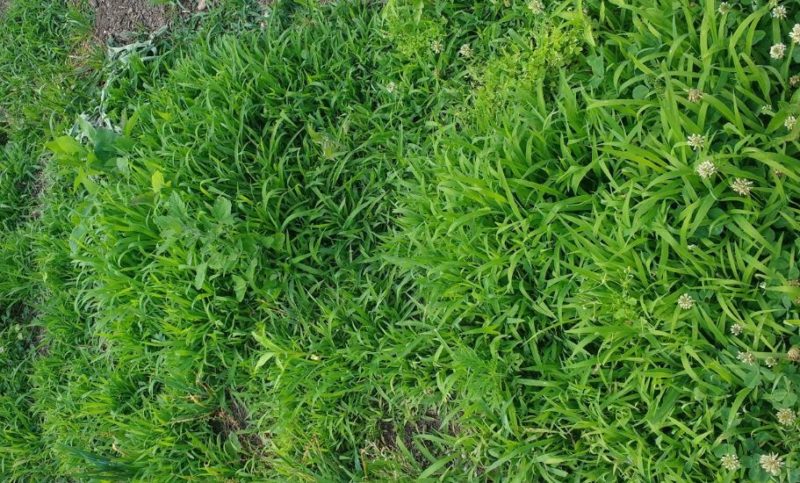
I am about to step on a few more toes too with this tip too. But, those weeds that erupt like giant multi-armed soil monsters in extreme heat are there to help.
Barnyardgrass, spurge, purslane, and more are the heralds warning you that your organic matter is used up and your soil is too dry. Their job in nature is to stave off irreparable soil compaction and desiccation until weather conditions improve.
In other words, they are nature’s emergency mulch. If they appear in large quantities, you need to add more fertility to your soil and water a whole bunch.
Personally, I don’t immediately rip them out because they are serving a purpose. I control them directly around my plants, so they don’t outcompete my preferred plants. But I leave them in unplanted beds or pathways to protect the soil until I can add more compost or get an alternative cover crop started in their place.
Tip 9: Add Compost More Often
Most of the gardening advice tells us to add compost in fall for best results. That’s entirely true if your compost is not well-aged. But, you can add well-aged compost (e.g., six months minimum) at any time of the year.
Adding a steady supply as things heat up can help keep your soil in better condition through heat streaks. It cuts down on plant stress by keeping a steady supply of food available. Plus, it helps preserve water in the soil if you apply enough of it.
Tip 10: Use Liquid Fertilizer
Another way to help deliver nutrients to plants, and keep nutrients from being depleted in hot weather, is to use liquid fertilizers. Normally, in an organic garden, the soil feeds plants. But when plants and soil are stressed by heat, sometimes they need an emergency IV.
Using things like compost tea, fish emulsion, or urine around plant roots during excessive heat can give enough boost to keep plants going until conditions stabilize. As long as your liquid formula is in the 3-3-3 range of nutrient delivery (or less), it shouldn’t upset your soil life balance for short-term use.
Long-Term Tips for Cool Season Crops
There are other long-term strategies you can use to create a more heat resistant garden. These ideas require more research and planning. But, if you are dealing with heat extremes regularly, they are worth considering.
Tip 11: Slope Your Beds
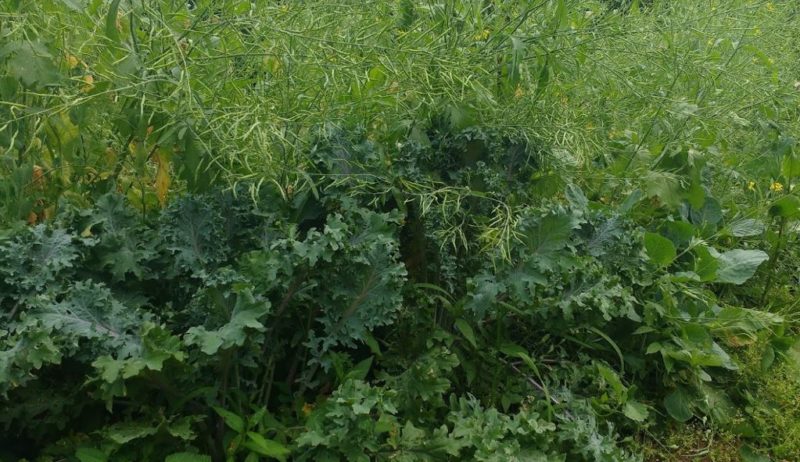
When the sun hits the earth at an angle, the light energy is more dispersed. Adding slight slopes to your beds can reduce the direct absorption of radiant heat and lower soil temperatures slightly.
Slopes create other challenges in a garden (e.g., too much drainage). So you need to make a comprehensive plan for this to work.
Tip 12: Consider a Misting System
Misting plants with water during peak heat hours can reduce the need for plants to do their own transpiration for cooling. Coupled with good watering practices, misting can go a long way toward keeping plants out of the heat stress zone that sets in motion a chain of progressive problems.
Beat the Heat
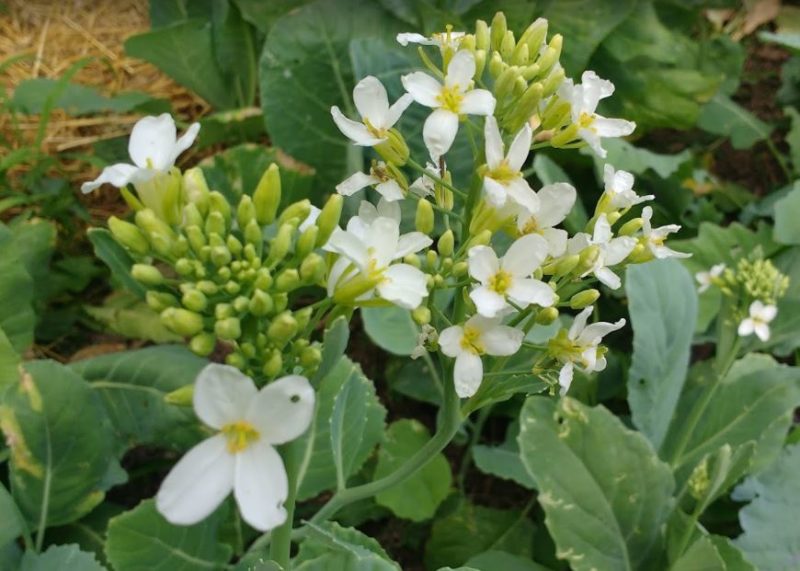
These tips will go a long way toward helping you make your garden more heat resistant. But, some years even this won’t be enough to extend your cool season crops.
Be ready to rotate your crops early. Keep high-heat germinating cover crop seeds on hand so your soil never goes unplanted. Also, have your herb-infused water or homemade lemonade in your fridge so you can keep your cool while you work to maintain healthy soil in your garden.

